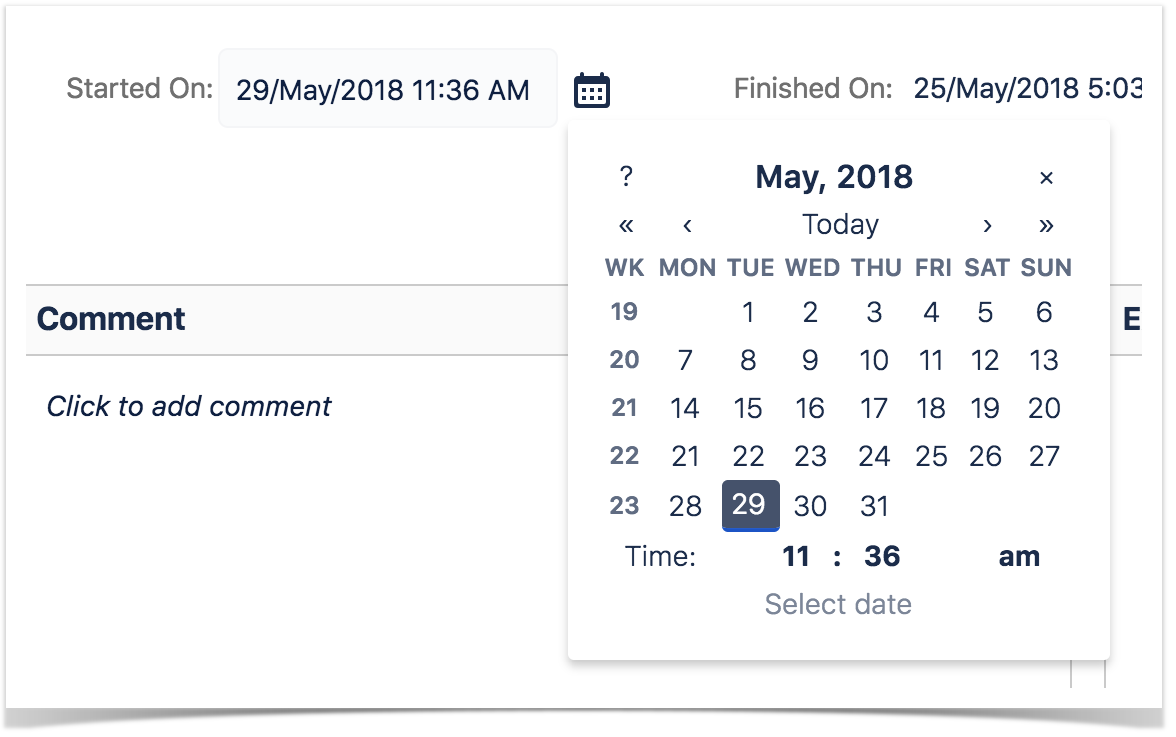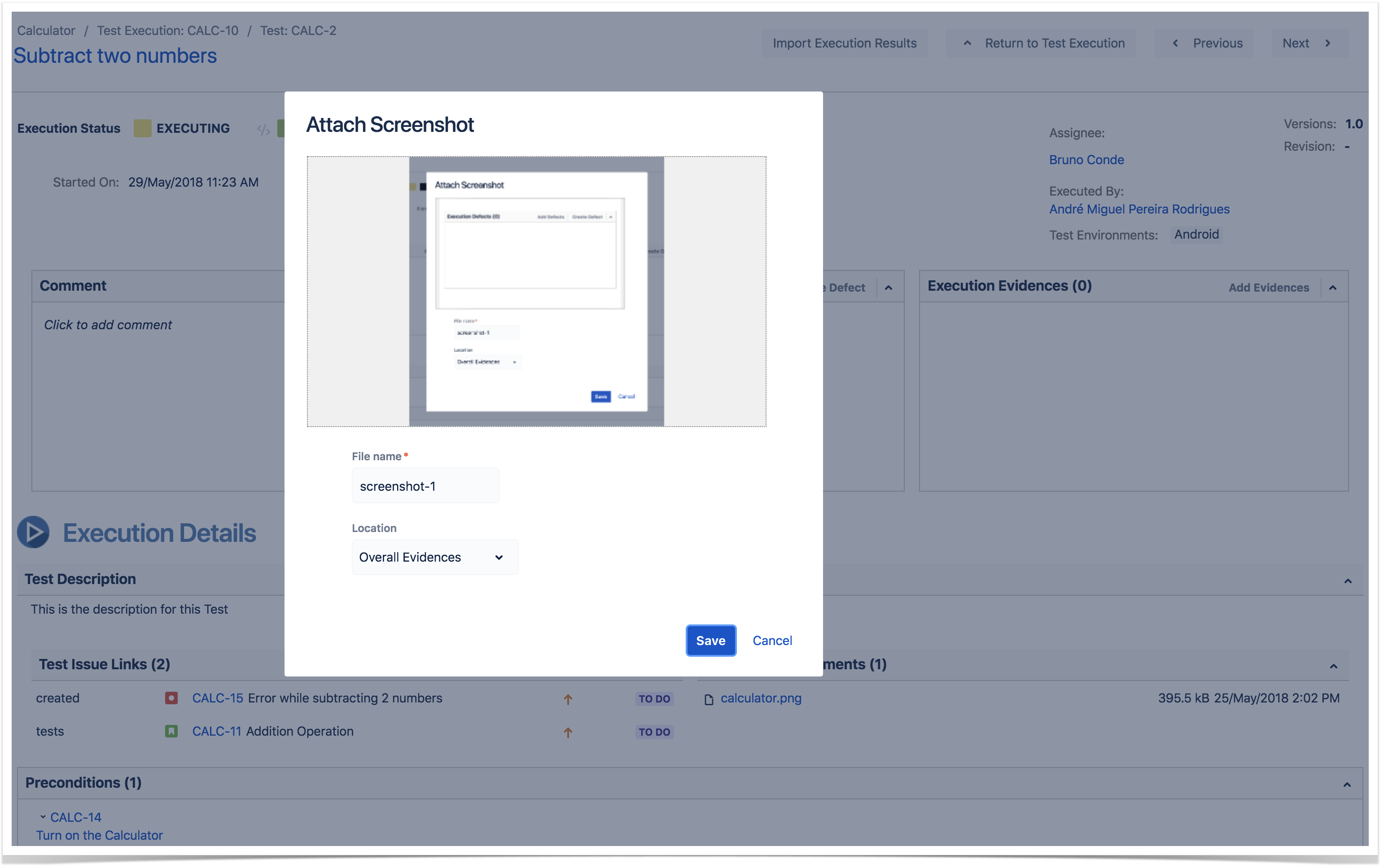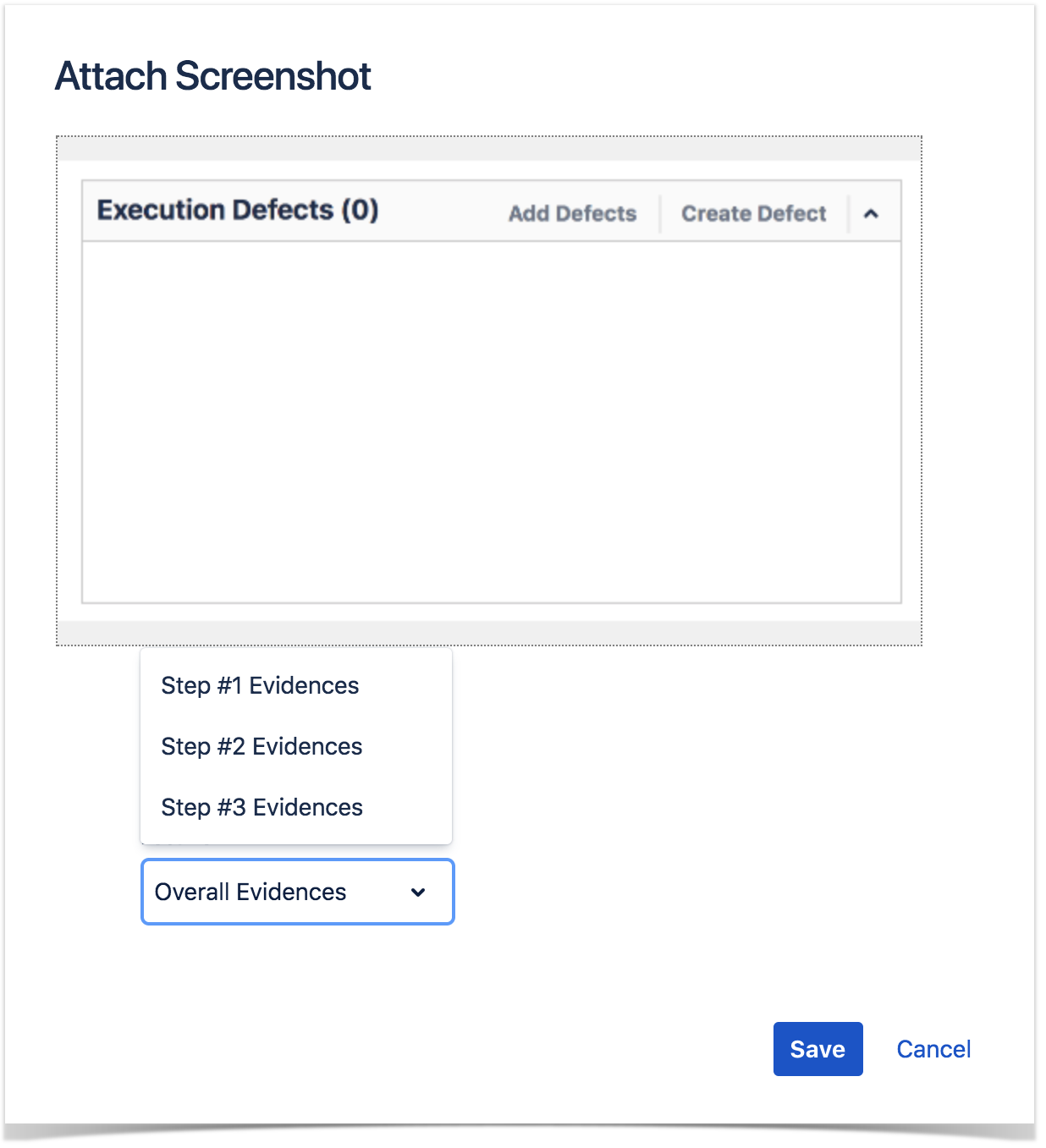Overview
You can either execute your tests manually or automatically. If it is an automated test, you can still manually set the test status for that execution.You can also create custom statuses.
Tests are always executed within a Test Execution context, even if it's an ad hoc execution. You can execute tests inline (i.e., define the test run status), directly in the Test Execution issue screen, or you can use the Execution Screen, which is detailed extensively below.
A Test Execution validates if all the Tests in a specific environment target passed. In order to execute, monitor the progress, and report the results, each Test has its own Execution page details. Each Test associated with a Test Execution is called a Test Run. A Test Run is like an instance of the Test that contains a copy of the test definition (e.g., description, steps) and the result of that test in the context of that Test Execution.
When a Test definition is modified, the respective Test Runs aren't automatically updated. This is because the execution of a Test depends directly on its definition. Each time a Test Run is created, the Test definition is copied to it. This guarantees that when the Test definition changes, the Test Runs are not affected and will always contain the original (i.e., when it was added to the Test Execution) Test definition.
You are allowed to execute a Test if:
- you have permission to "Browse" the Test Execution issue
- you have permission to "Resolve" the Test Execution issue
- the Test Execution issue is not in a status configured to disallow executions
- the Test issue is not in a status configured to disallow executions
Please note
Find more about how you can disallow executions based on the workflow status of Test or Test Execution issues at:
Even though you might not have permission to execute a Test Run and if the execution has already started, you can see the execution details page in read-only mode. An informative message will be shown to at the top of the execution page if the current Test Run is in read-only mode.
When you execute a Test, the Xray Execution Screen is shown. This screen is accessible from the Test Execution issue view page and the Test issue view page (Test Runs section), and this is where the execution results are displayed and registered. This page contains information about the Test definition and the Test Execution issue context to allow you to execute the Test without exiting this page.
The execution screen is composed of the following sections:
- Navigation and Actions bar
- Execution Status and Test Execution fields
- Comments
- Defects
- Evidence
- Test issue details
- Custom Fields
- Preconditions
- Test details (script or steps)
- Result contexts
- Activity
Navigation and Actions bar
This bar is always available to allow you to navigate the Test issue hierarchy. It also contains a toolbar with the Return to Test Execution button that allows you to jump to the current Test Execution issue page. The Next and Previous buttons allow you to quickly navigate to the execution screen of the other Tests in the same Test Execution, if applicable.
On this bar, you can also find actions to Export test definitions and Import execution results. This is useful if you need to do an ad-hoc execution for an automated Test. Usually, automated tests are executed in a Continuos Integrating platform and the results are imported automatically into Xray (creating new Test Execution issues for the results) but you can also execute each automated Test individually and import the execution result.
Export to Cucumber
If you're executing a Cucumber Test, an option to export the Test as a feature file will appear.
Import Execution Results
If you already have the test results, just use this action to import the report files into Xray and update a specific Test Run.
Execution Status
The Execution Status describes the current Test progress. The possible (native) status for a Test Run are TODO, EXECUTING, FAIL, and PASS. You can also create custom statuses in the Xray Test Statuses Settings global page.
You can change the status of the execution directly through this field. It supports inline editing and once activated, it will display a set of statuses that you can set the Test Run. If the option for setting the Test Run status manually without having to execute all Test Steps (or Examples, as in the case of Cucumber Tests) is enabled in the Xray administration page, then you can set the Test Run Status to any status, independent of the current aggregate status of the Test Steps (or Examples). If this option is disabled, then the status that you can set through this field will be limited to the available transitions based on the current Steps or Examples aggregated statuses.
The status section contains other relevant fields such as:
- Assignee - the User assigned to perform the current test execution
- Executed By - the last User that changed the status of the current test run
- Versions - the target release version tested by the current test execution
- Revision - the source code and documentation version used in the current test execution
- Started On - the date and time the execution of the current test started
- Finished On - the date and time the execution of the current test finished
You can change the Test Run assignee directly on the field. It supports inline editing and once activated, you can filter by user and then select the one you want to assign to the Test Run.
If the dates are configured to be edited, you can edit the Started On date by clicking the calendar icon and choosing the date and time. You can check your configurations by going to Jira Administration > Add-ons > Miscellaneous.
Comment
This field is inline editable so you can input comments about the current execution without reloading the page.
It supports the Jira markup wiki language.
Execution Defects
This field lists the overall defects related to the current execution. It is possible to Create new Defect issues (or sub-tasks) or Add existing Defects by clicking the respective option.
Execution Evidence
This field lists the attachments related to the current execution. Clicking Add Evidences opens up the Attach Files dialog box. Check here for more information about attachments.
Issue Details
This section includes some fields present on the Test issue. It often contains useful information for testers to execute the Test.
Test Description
This section includes the current Test issue description. It often contains useful information for testers to execute the Test.
This field supports the Jira markup wiki language.
Test Issue Links
This section shows all links associated with the Test.
Test Issue Attachments
This section shows all attachments associated with the Test.
Custom Fields
You define additional custom fields for Test Runs. These fields can be useful to add extra information to Test Runs, usually only available when or after executing Tests.
Test Run custom fields can be configured by project and by Test Type. Therefore, these settings will not affect other projects within your Jira instance. For instance, it is possible to have custom fields just for Manual Tests within a project.
If there are any custom fields defined for the scope of the Test Run, they will appear on the "Custom Fields" section.
It is also possible to define custom fields that are mandatory. If this is the case, users will not be able to set a final status on the Test Run if there is any required custom field that is not populated.
Preconditions
This field shows the Preconditions issues associated with the current Test.
Test Details
Within the Test Details section, you will find the Test script to execute. Depending on the Test Type, this section can display Test Steps, a Generic Definition field (for unstructured Tests), and Gherkin scenarios.
Manual Test Step Results Table
A Manual Test execution screen contains the Test Steps, with the Action, attachments and all the other configured fields to be used as a reference while testing. The Test Steps field configuration used is the one defined in the Test Run's Test project.
By clicking on each step, the following fields become editable:
- the Actual Result field which contains the actual result of the execution of the step;
- This field can be edited using the WYSIWYG markdown editor.
- It's possible to refer to an Evidence previously added to any Step or Global execution
- the Comment field, which contains any notes about the corresponding step;
- the Defects field, which contains any defect associated with the corresponding step. It is also possible to input new defects by clicking on:
- Create Defect to create a new Defect
- Create Sub-Defect to create a new Sub-Defect (sub-task)
- Add Defects to add an already existing defect
- the Evidences field, which contains any attachment associated with the corresponding step. It is also possible to input new attachments by clicking on the + button, which opens the Attach Files dialogue box
- the Status, which contains the current step testing status. This can be changed by clicking on any of the statuses in front of your Step Status.
Note: Changing the Status on each Step will affect the Execution Status field on the Execution Screen.
Gherkin Test Details
Gherkin Tests always display the Test scenario on the execution page. Usually, these tests are automated and their result can be imported into Xray. However, it is also possible to execute these Tests manually by setting the overall result of the Test Run, or by setting the result of each example (in case of scenario outlines).
Examples
A scenario outline contains a table of examples that define several inputs and outputs for the given scenario. Each example is, therefore, a set of values that will be replaced on the scenario.
The examples section details these examples, containing an overall status bar in the header and a table with all the examples below. Each example can have the status: PASS, FAIL, EXECUTING or TODO.
A scenario outline test is PASS only if all examples passed.
A scenario outline test is FAIL if at least one of the examples failed.
A scenario outline test is TODO if at least one of the examples did not run and all the other examples passed or todo.
Unstructured Test Details
Unstructured Tests only contain the definition field on the Test Details section. This field can specify a test script, an ID to an external (automated) test case, or an Exploratory Test charter. Similar to Gherkin Tests, most unstructured test results will be imported or set by another tool. However, it is also possible to set the status of unstructured tests manually.
Automated Results
Xray supports the import of multiple execution results for the same Test Run. Multiple executions for the same Test Run specifies different results for different contexts/environments. Multiple executions are only supported for Automated Tests. Manual Tests do not have this concept, yet.
When a Test Run contains multiple executions imported from external sources like Calabash and Xamarin Test Cloud, these executions are presented in a "Results" section on the execution page.
This section contains a Table with all executions for the same Test Run. The table has the following columns:
- Context: An execution context name (in the case of Xamarin Test Cloud results, the mobile device, and operating system version)
- Error Message: A possible error message if the result has failed
- Duration: The complete duration of an execution result
- Status: The execution results status
Activity
The Activity field lists all the activities related to the current execution.
Attaching Screenshots
To attach a screenshot, paste the image from your clipboard using the relevant keyboard shortcut. (For Mac OSX, use CMD+V; for Windows, use Ctrl+V.)
Enter a file name for the screenshot you are attaching (defaults to "screenshot-" concatenated with the next number available) and choose where you want to place the evidence (Overall Execution or Test Steps).
Click Save to attach the captured image to your Test Run.
Updating the definition of the Test after the execution started
When a Test definition has changed, a new dialog box will appear at the top of the Execution page informing you that the current execution is obsolete. You will be prompted with two buttons: Reset and Merge.
Reset Execution
You can choose to reset the Execution or keep it for historic record. If you reset the execution, all information previously saved (status, evidence, defects) will be erased.
Merge Execution
You can choose to merge the new Test definition into the current status of execution. This will keep steps that weren't changed along with the associated results/comments/evidence. It will also load new steps (moved, erased, or created), preconditions, or attachments definitions. This will always force a recalculation of Test Run Status. For instance, if the current Test Run Status is FAIL because of a step and this step is removed from Test, if you merge, then the Test Run Status will change to whatever the value combination of the others steps returns.

























